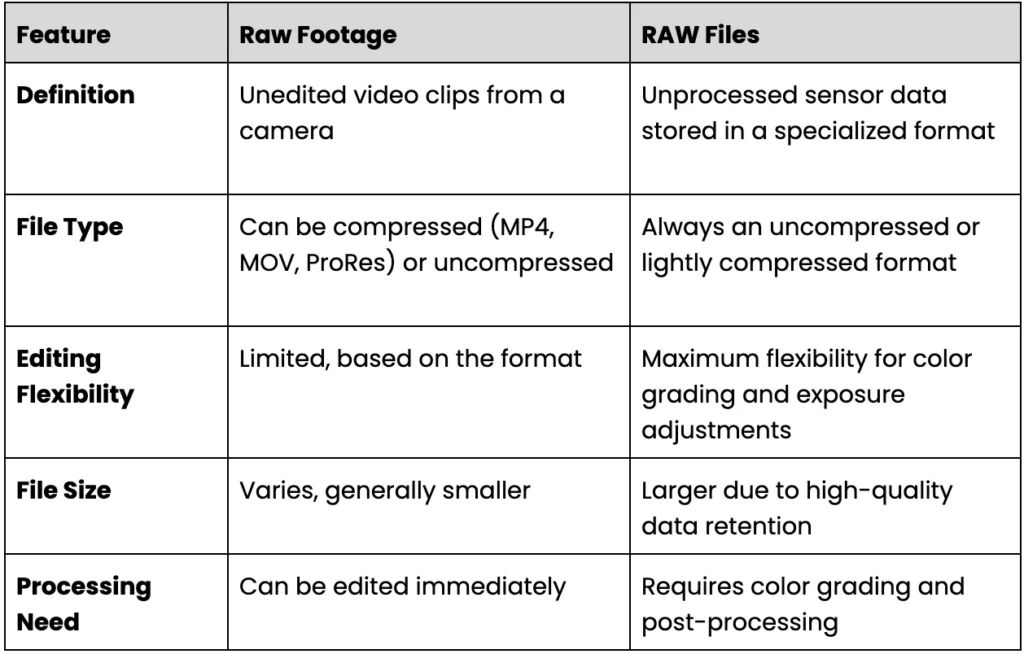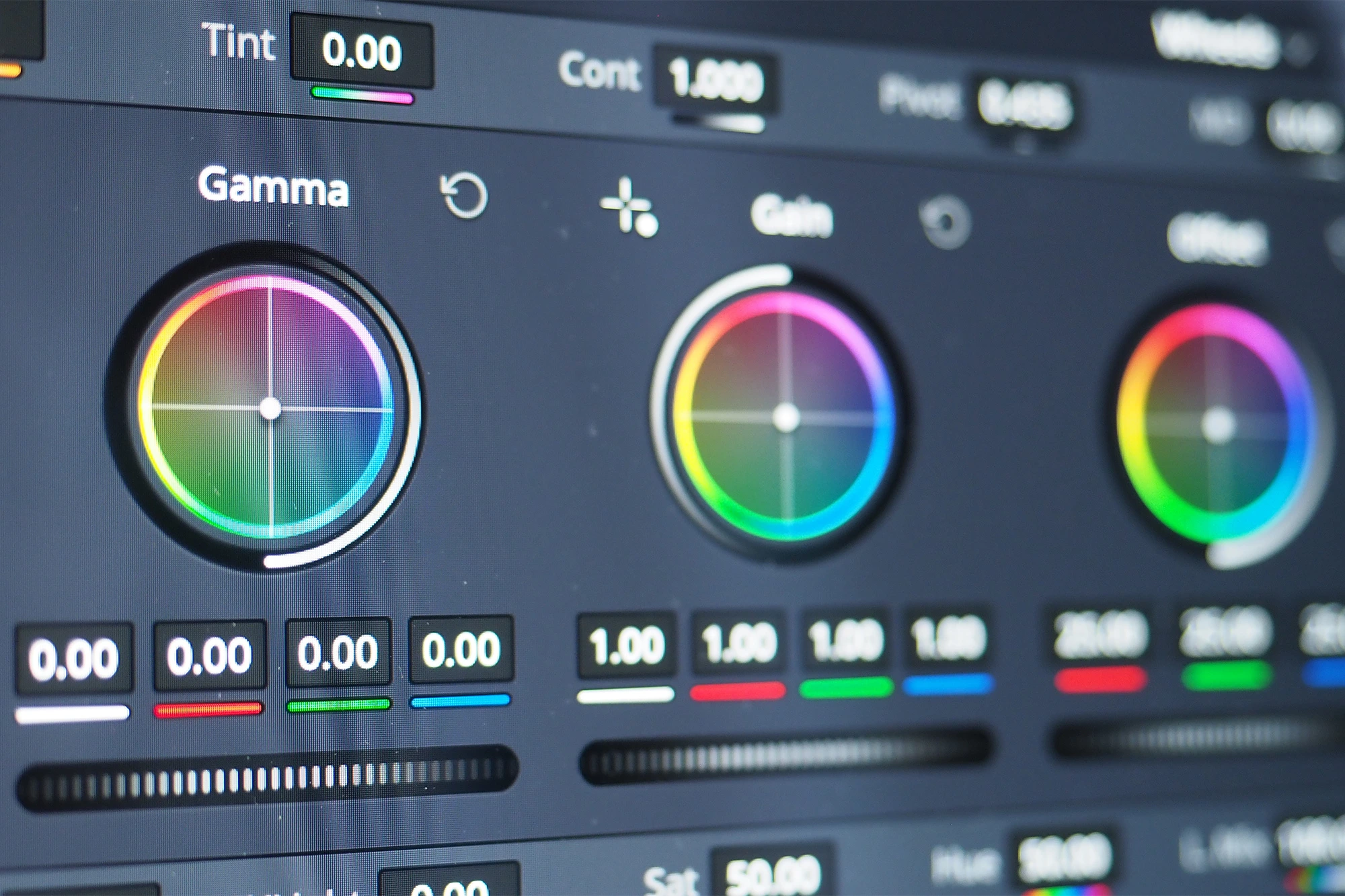In the world of video production, terms like “raw footage” and “RAW files” are often used interchangeably, but they actually refer to two very different things. Understanding the distinction is crucial, especially if you work in video editing, cinematography, or post-production.
What is Raw Footage?
Raw footage refers to the unedited video clips captured by a camera during a shoot. It’s the original material that has not yet been processed, edited, color-graded, or enhanced in any way. Raw footage can come in a variety of file formats, including compressed and uncompressed formats, depending on the camera settings and workflow.
For example, if you shoot a corporate interview using an MP4 or ProRes format, the unedited clips straight from the camera are considered raw footage. Even if the footage is compressed, it is still called “raw” because it hasn’t gone through editing or post-processing.
What are RAW Files?
RAW files, on the other hand, are a specific type of file format that contains unprocessed image data straight from a camera’s sensor. Unlike compressed formats like MP4 or MOV, RAW files preserve the maximum amount of detail, dynamic range, and color information, allowing for extensive adjustments in post production.
Common RAW video formats include:
- CinemaDNG
- Apple ProRes RAW
- Blackmagic RAW (BRAW)
- REDCODE RAW (R3D)
- Canon RAW Light
Because RAW files capture a higher bit depth and more information, they allow for greater flexibility in color grading and exposure adjustments compared to compressed formats. However, they also require more storage space and powerful hardware for editing.
Key Differences

Which One Do You Need?
- If you need a quick turnaround and don’t require heavy color grading, standard raw footage in a compressed format will work just fine.
- If you’re working on high-end commercial projects, films, or projects needing maximum image quality, RAW files are the better choice, despite requiring more post-production work.
Final Thoughts
While all RAW files are raw footage, not all raw footage is RAW. Raw footage simply means unedited, while RAW files refer to a specific, high-quality format that retains the most image data. Choosing between the two depends on your project’s needs, storage capacity, and post-production workflow.
























